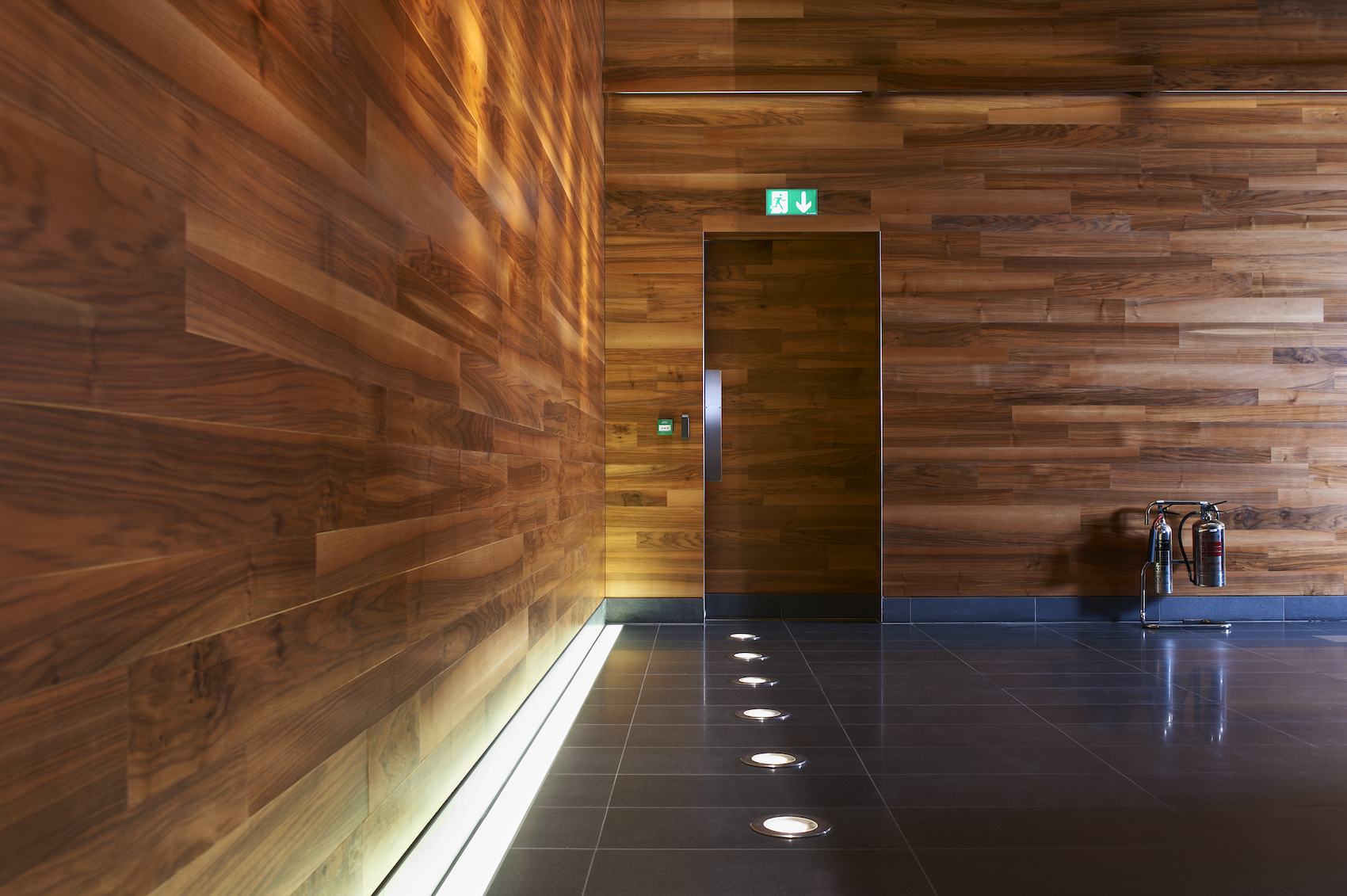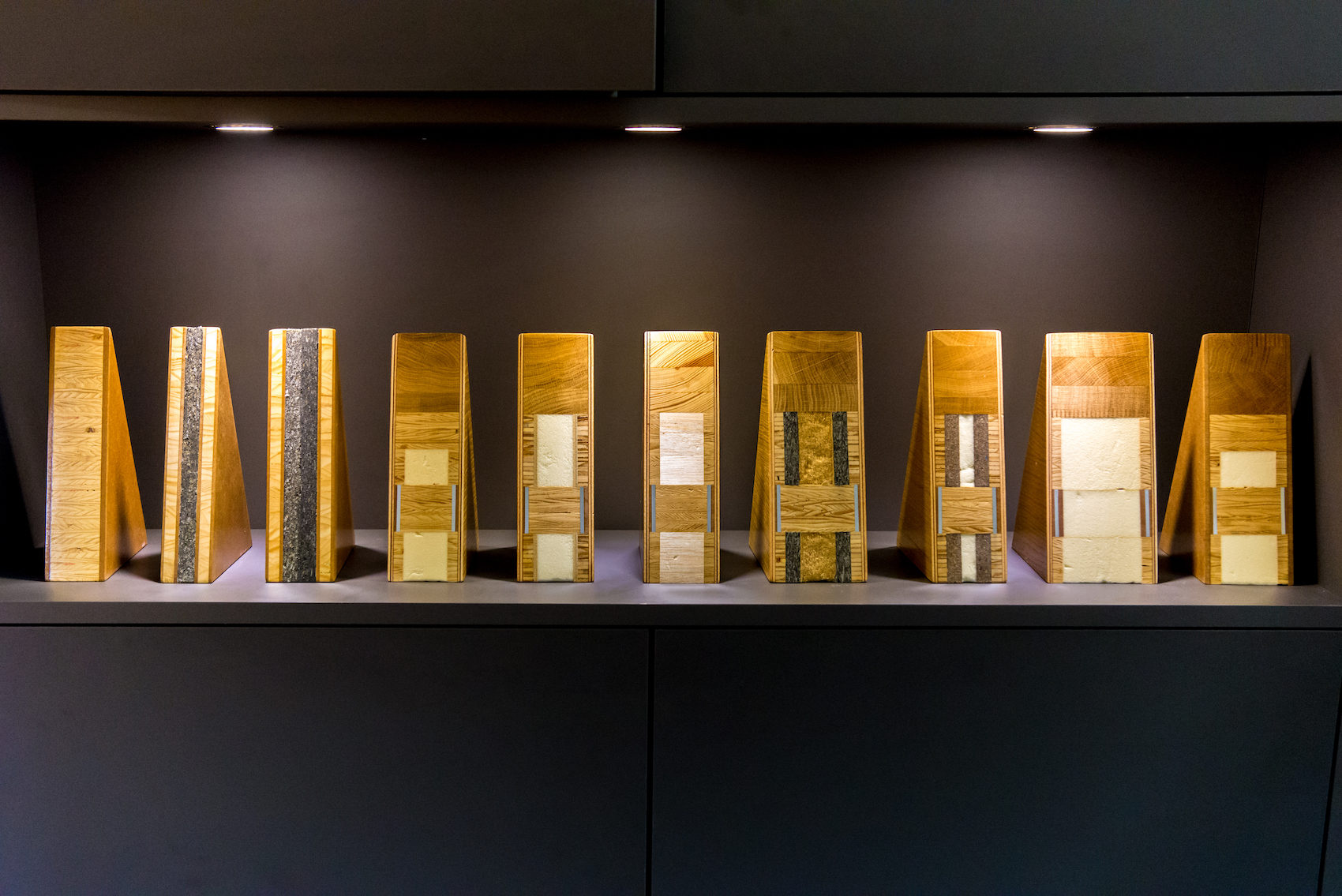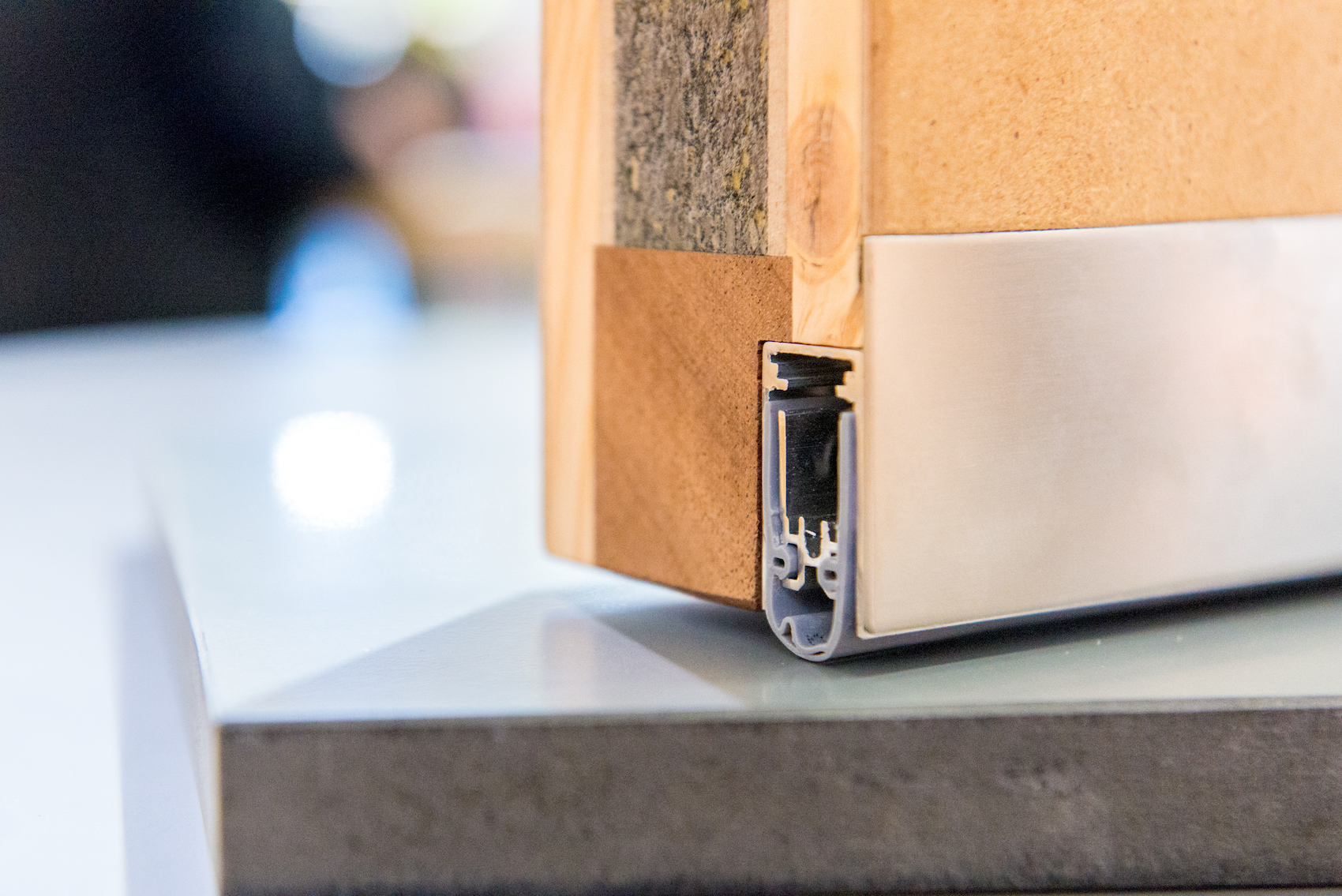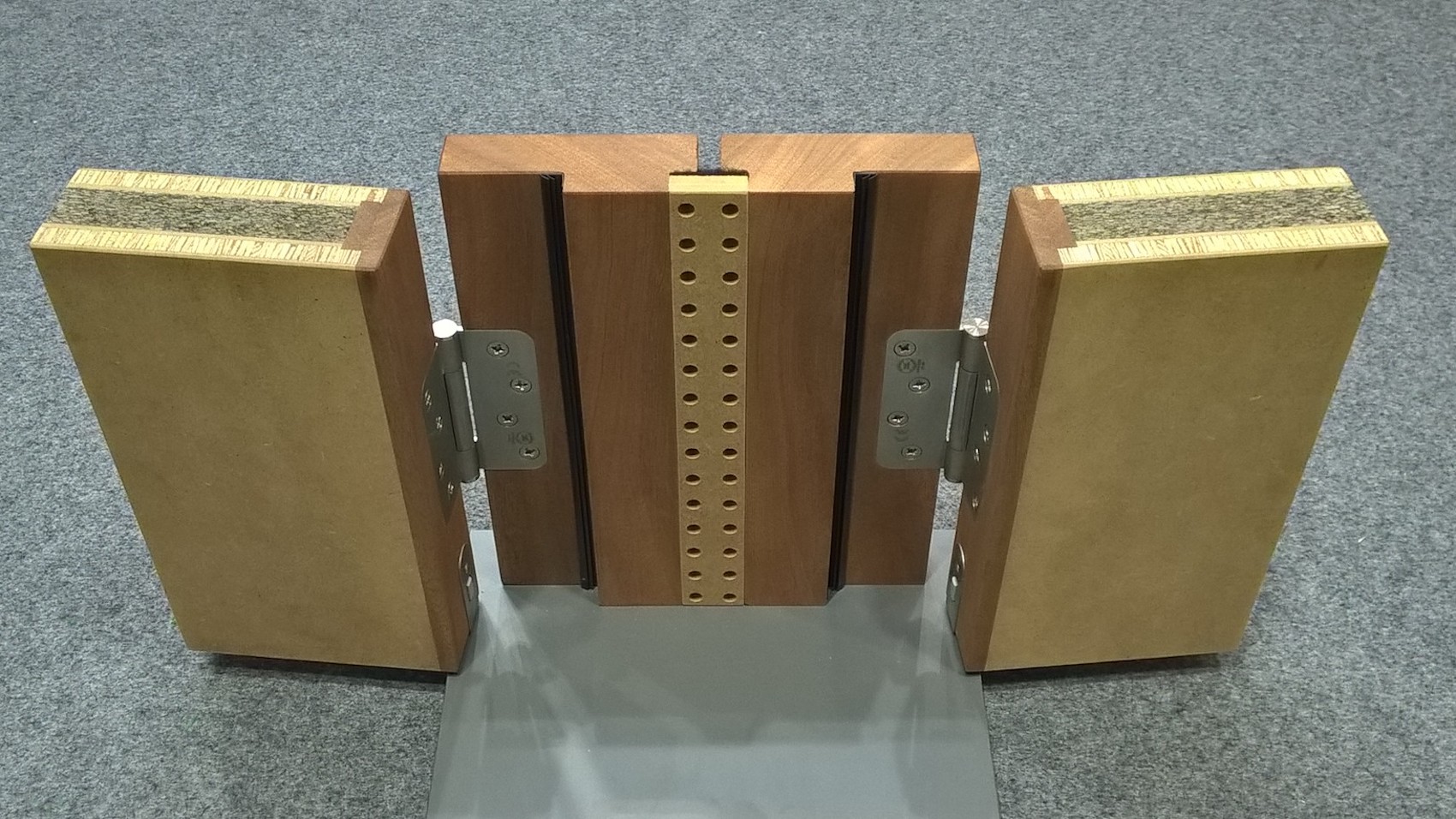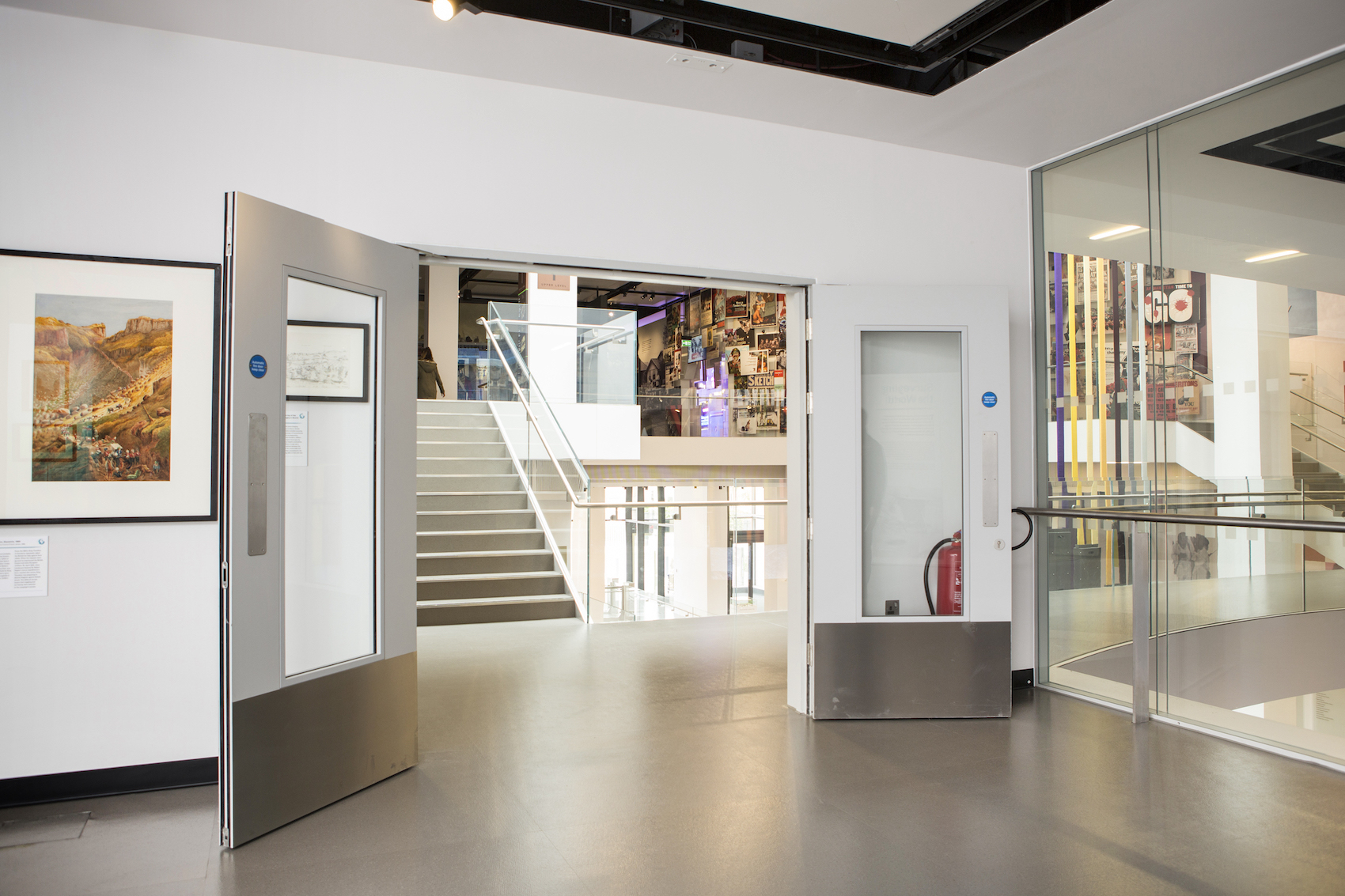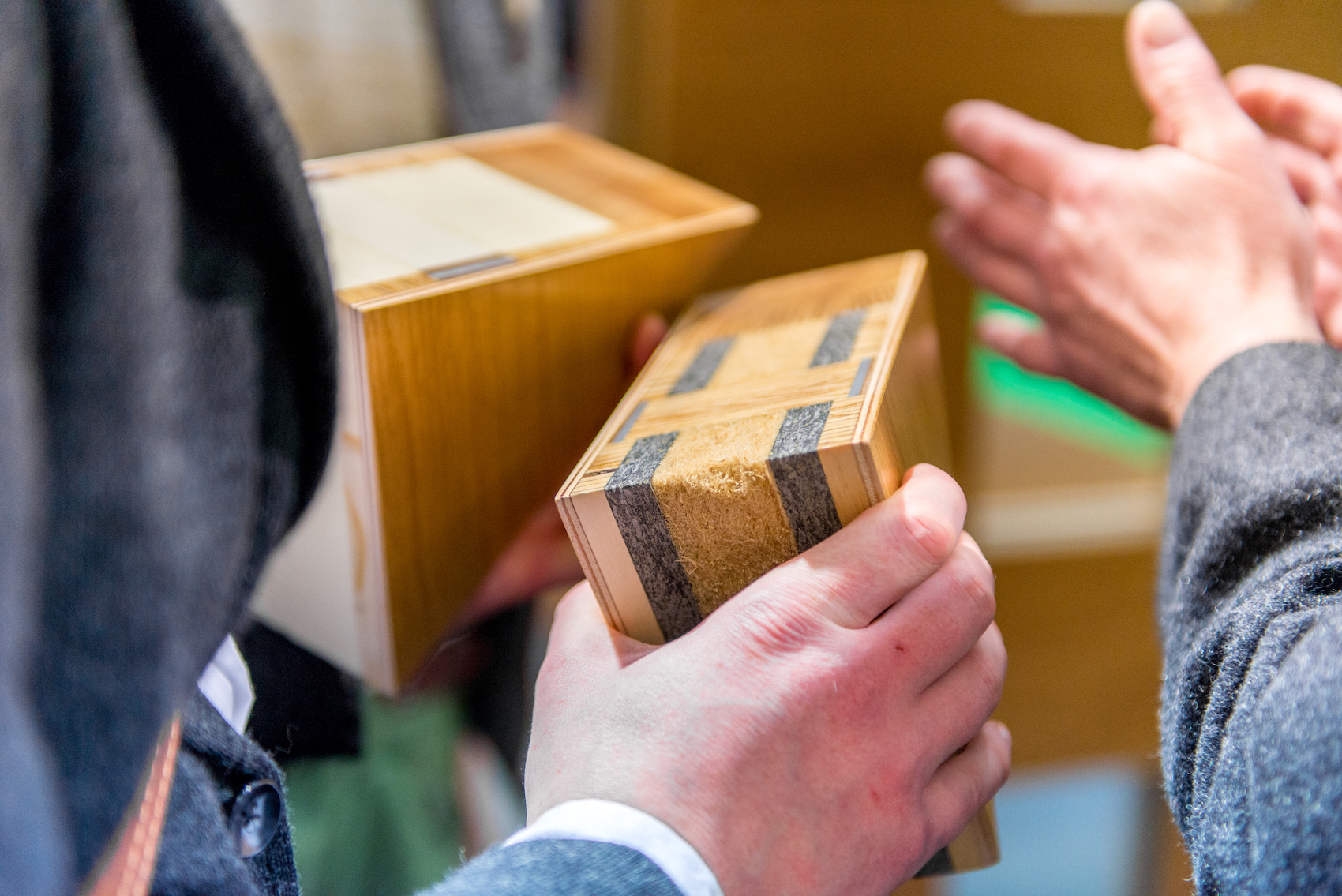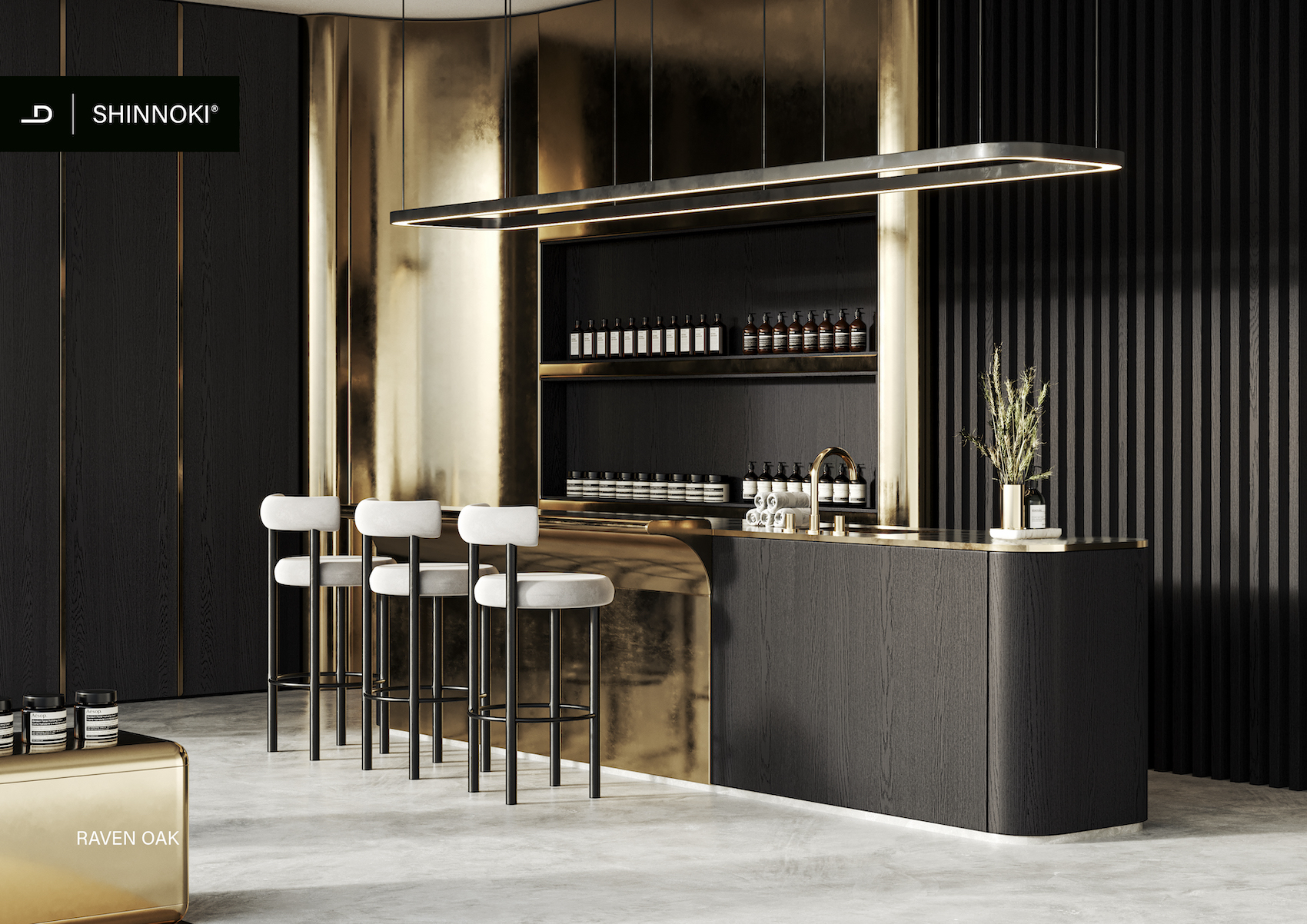Chris Higginson, Group Technical Sales Manager for Doors at James Latham, speaks to Architecture Today’s Technical Editor John Ramshaw about how Moralt’s technically advanced and adaptable FireSound door blanks can help architects meet Parts B and E of the Building Regulations.
In association with![]()
Beautifully integrated doors at Ropemaker Place, Moorgate.
Photos
Moralt
Forming a key element of James Latham’s timber panel offering are high-quality door blanks, ranging from MDF and plywood-faced variants to particle door cores, which can be laminated, veneered or painted. FireSound from Moralt is one of the distributor’s most innovative and versatile door blank collections, providing both fire and acoustic performance in a single product. So how does FireSound work? What applications is it best suited to? What acoustic and fire ratings are achievable? And how can architects ensure regulatory compliance from design to installation? These questions and more were answered by Chris Higginson, Group Technical Sales Manager for Doors at James Latham, in conversation with Architecture Today’s Technical Editor John Ramshaw.
What is the Moralt FireSound range, and how does it differ from standard door blanks on the market?
Moralt FireSound is a range of high-performance door blanks that combine fire resistance and acoustic attenuation in a single product. Its core construction is what sets it apart from other products. Unlike chipboard-based GDC or blockboard solid timber cores, Moralt blanks are made using rotary-peeled veneers from solid timber. These are cut into staves and turned 90 degrees so the tree’s growth rings are vertically aligned, enhancing stability and reducing movement.
The acoustic performance is achieved by sandwiching a dense sound-deadening material between the timber core layers and finishing the blank with MDF faces – offering both strength and design flexibility.
Solid timber staves are vertically aligned, enhancing stability and reducing movement.
Where are FireSound door blanks most commonly specified?
FireSound door blanks are widely specified in sectors where both fire protection and acoustic privacy are critical. In hotels, they are typically used for room entrance doors and interconnecting bedroom doors, providing both safety and sound insulation between adjoining rooms. In healthcare environments, they are ideal for consulting rooms, maternity suites, and ward entrances, where confidentiality and fire compliance are equally important.
Education settings also benefit from their performance, particularly in music rooms, theatres and drama studios, where controlling noise transmission is essential. The entertainment sector has seen growing demand, with FireSound now used for entrance doors to cinemas and auditoria. In the workplace and civic settings, the door blanks are increasingly used for interview rooms in police stations, computer suites, and private meeting spaces, where speech privacy and fire safety are both paramount.
A door blank for every application.
Can you explain the key design principles behind FireSound and how it balances fire resistance, acoustic performance, and durability?
It’s actually relatively straightforward to manufacture a fire-rated door – the real challenge lies in combining fire and acoustic performance. Moralt’s solution integrates a specially selected sound-deadening core that avoids the weight and harsh processing of steel. This allows the product to achieve consistent acoustic results without sacrificing fire integrity. The product has been tested under EN 1191, which covers mechanical durability for door sets in repeated-use scenarios. Provided doors are assembled accurately and installed correctly, long-term durability is not an issue.
What fire ratings are available within the FireSound range, and what test data supports these classifications?
FireSound products are available in FD30 and FD60 ratings, while the FireSound Extreme variant can reach FD120. All variants are third-party certified by BM TRADA Q Mark, or IFCC, providing robust evidence of compliance with BS 476 Part 22 and EN 1634.
Acoustic seals, drop seals, and proper installation are all crucial.
Why is it important to pair fire-rated door blanks with the correct frame and partition system?
All fire-rated doors are tested as part of a door set, which includes the blank, frame, ironmongery, seals and fixings. Deviation from tested combinations can invalidate fire certification. Door sets must therefore follow the specific configurations outlined in FOA tests or extended application (EXAP) reports to comply with Approved Document B. On site, correct installation is equally critical. While manufacturers can pre-hang and test a complete set, the final fitting must be undertaken by a competent installer and checked by Building Control.
What acoustic ratings can FireSound achieve, and how has it been tested?
In certain situations, FireSound door blanks can achieve up to 45dB Rw. But when used back -to-back for installations, such as interconnecting rooms in hotels, Firesound can deliver up to 68dB Rw! These values are verified in laboratory conditions using standard test procedures for airborne sound insulation.
Double-door arrangements – such as hotel interconnecting rooms – can deliver up to 68dB Rw.
How is acoustic performance maintained once the door is integrated into a partition system?
Acoustic seals, drop seals, and proper installation are all crucial. When FireSound blanks are supplied as pre-hung door sets, all necessary seals are included and correctly positioned. On site, the partitioning or joinery contractor must ensure the set is installed to specification, just as with fire-rated installations.
What thicknesses, sizes and core options are available within the FireSound range?
FireSound is available in 44mm (FD30/40dB), 54mm (FD60/40dB) and 59mm (FD60/43dB) and FiresoundPLUS is available in 54mm (FD60/45db). The product is highly flexible, supporting bespoke heights and widths – including oversize doors up to and beyond three metres. Blanks can be cut down in width and height to suit project-specific openings.
National Army Museum, Chelsea (photo: Simon Clay).
Can FireSound be veneered, laminated or painted?
Yes. The MDF-faced blanks are suitable for direct painting, veneering or laminating, with no negative impact on performance. In general, any facing up to 2mm thick per side is permissible, including hospital-grade PVC and decorative laminates.
How flexible is the product in terms of edge detailing, glazing apertures or bespoke design?
FireSound blanks support a wide range of design options, including decorative face mouldings, panel effects, square or chamfered glazing beads, and multi-aperture configurations. This enables architects to meet both performance and aesthetic requirements in a single certified solution.
Fire and acoustics all in one door.
What sustainability credentials does FireSound carry?
All FireSound blanks are FSC-certified and covered by full Environmental Product Declarations (EPDs), which are available for architects upon request.
What guidance does James Latham provide to help ensure correct specification and installation?
Each of James Latham’s 12 depots has a designated Door Champion – a specialist who can support architects, contractors, door set manufacturers, and joinery firms with product selection and technical advice. In-person meetings, CPDs, and project-specific design reviews are available nationwide. James Latham also offers sample materials and Teams consultations as part of its end-to-end support.


